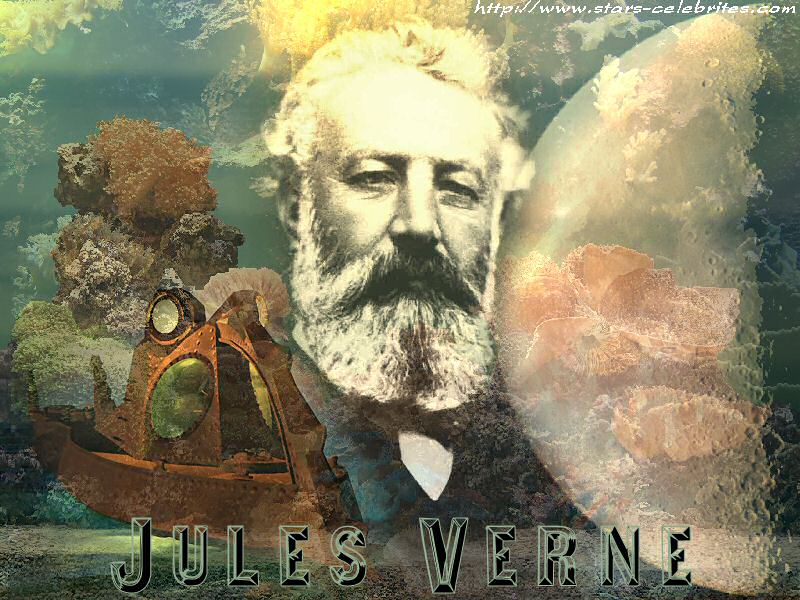Contents
* 1 Early life
* 2 Literary debut
* 3 Later years
* 4 Reputation in English-speaking countries
* 5 Hetzel's influence
* 6 Bibliography
* 7 See also
* 8 References
* 9 Further reading
* 10 External links
Early life
Jules Gabriel Verne was born in Nantes, Brittany in France, to Pierre Verne, an attorney, and his wife, Honorine Verne. spent his early years at home with his parents in the bustling harbor city of Nantes. The family spent summers in a country house just outside the city, on the banks of the Loire River. Here Jules and his brother Paul would often rent a boat for a Franc a day. The sight of the many ships navigating the river sparked Jules's imagination, as he describes in the autobiographical short story Souvenirs d'Enfance et de Jeunesse. At the age of nine, Jules and Paul, of whom he was very fond, were sent to boarding school at the Saint Donatien College (Petit séminaire de Saint-Donatien). As a child, he developed a great interest in travel and exploration, a passion he showed as a writer of adventure stories and science fiction. His interest in writing often cost him progress in other subjects.
At the boarding school, Verne studied Latin, which he used in his short story Le Mariage de Monsieur Anselme des Tilleuls in the mid 1850s. One of his teachers may have been the French inventor Brutus de Villeroi, professor of drawing and mathematics at the college in 1842, and who later became famous for creating the US Navy's first submarine, the USS Alligator. De Villeroi may have inspired Verne's conceptual design for the Nautilus in Twenty Thousand Leagues Under the Sea, although no direct exchanges between the two men have been recorded.
Verne's second French biographer, his grand-niece Marguerite Allotte de la Fuÿe, formulated the rumor that Verne was so fascinated with adventure at an early age that he stowed away on a ship bound for the West Indies, but that Jules's voyage was cut short when he found his father waiting for him at the next port.
 jules verne
jules verne jules verne
jules verne jules verne
jules verne jules verne
jules verne jules verne
jules verne jules verne
jules verne jules verne
jules verne jules verne
jules verne jules verne
jules verne jules verne
jules verne jules verne
jules verne jules verne
jules verne jules verne
jules verne
No comments:
Post a Comment